by Doug Becker

Red-wings! One of the most abundant birds in North America. One of easiest birds for people of all ages to identify. Is there anyone who hasn’t walked through agricultural fields, or riverbeds and lakeshores lined with cattails and not been greeted by the springtime ‘conk-la-lee’ call of the Red-winged Blackbird? The Red-wings are solely unique among the many kinds of blackbirds, because of the dramatic red and yellow shoulder badge, patch, or epaulettes on the male’s shiny-black wings. You can’t miss them. They almost seem to be showing off in early spring as they perch on the tallest reeds flashing their bright-red wing patches and calling for a mate. Beautiful!

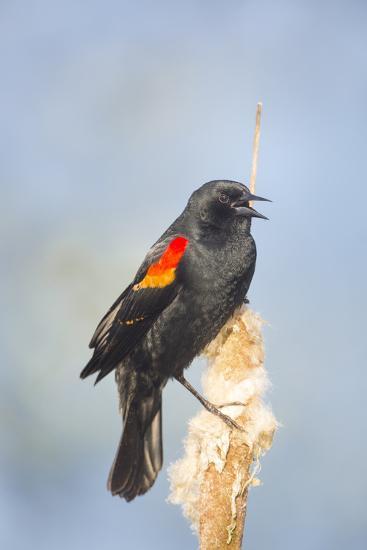
Most Red-winged Blackbirds are year round residents. They’re abundant in every U.S. state, all of southern Canada up to Alaska, and throughout most of Mexico. Red-wings in the far north will migrate up to 800 miles south for their winter diet of seeds, including corn and wheat. Springtime calls the northern Red-wings back north for their diet of mostly insects. Red-winged Blackbirds will migrate and mingle with other blackbirds in large flocks which can number in the thousands. Birders can easily pick out the Red-wings, but the huge flocks are no friends of the farmers or their crops! It’s not unusual to see and hear loud air-canon blasts going off in the fields to chase the clouds of blackbirds away. Red-wings are protected under the Migratory Bird Treaty Act, however, with the increase in blackbird populations, there is no Federal permit needed when flocks are about to, or are in the process of, agricultural crop destruction. This does not include your backyard!

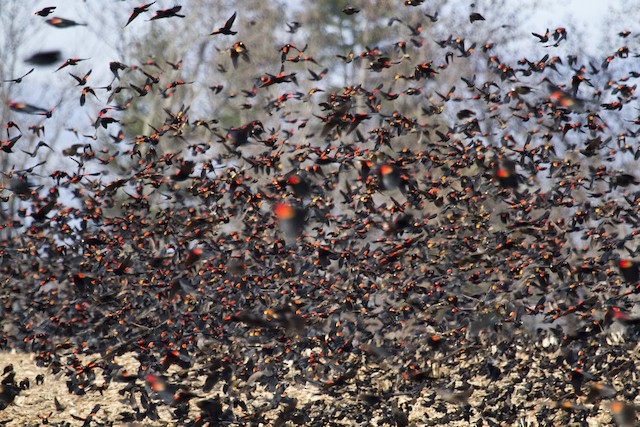
Although the glossy-black male with his bright red and yellow shoulder patches can be seen and heard from a long distance, the female is much more subdued in her crispy brown stripes sometimes resembling a sparrow. The female generally selects the nesting site and builds the nest. Typically, she builds the nest low to the ground or water where there’s dense grassy-like vegetation. Reeds, cattails, bulrushes, sedges, or willow and alder trees, or wheat, barley and rice plants all provide excellent nesting sites. The nest is built by winding stringy grass material around several upright stems, then weaving in a platform of wet vegetation. Around this, she adds wet leaves and some decayed wood. The nest is finished with a plastering of mud and fine grasses to make the inside cup, which measures 4-7 inches across and 3-7 inches deep. Meanwhile, the male continues to show off his colors and singing his ‘conk-la-lee’ song from a tall nearby perch. Each year Red-wings brood 1-2 times with a clutch of 2-4 eggs. Incubation period is 11-13 days, then nesting time for the chicks is a mere 11-14 days.
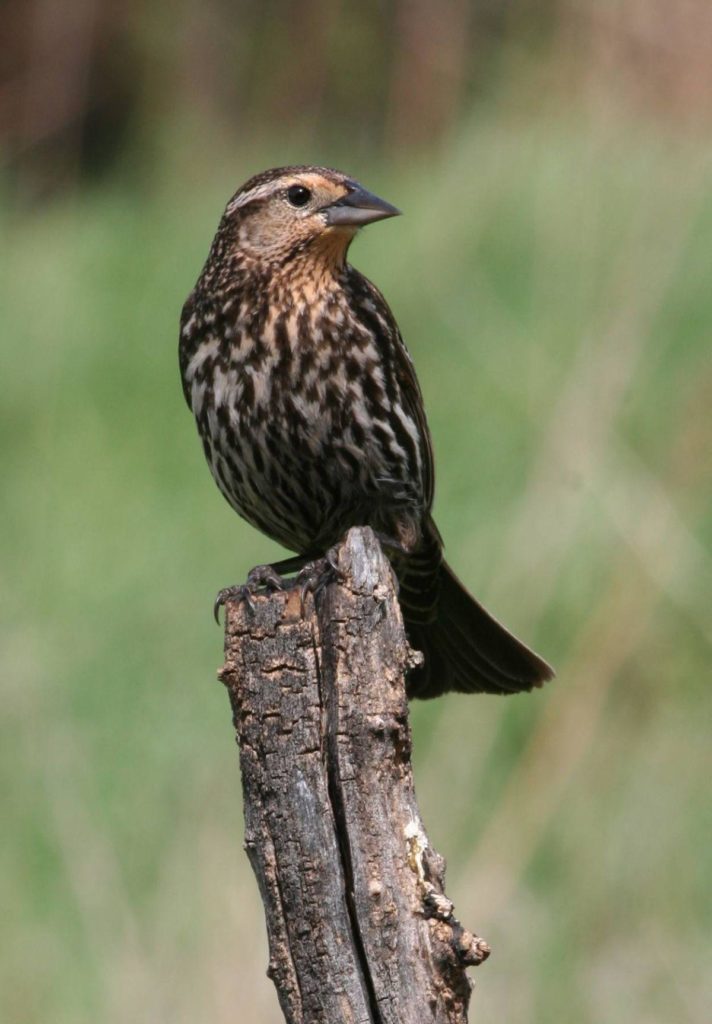
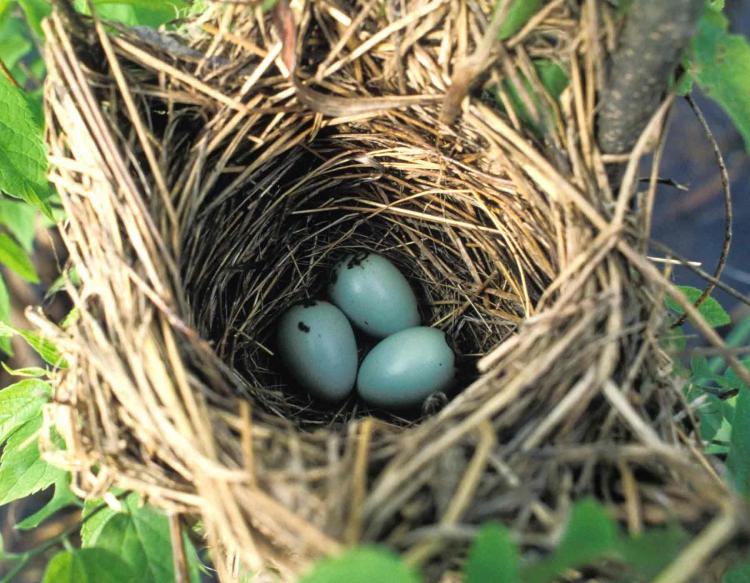
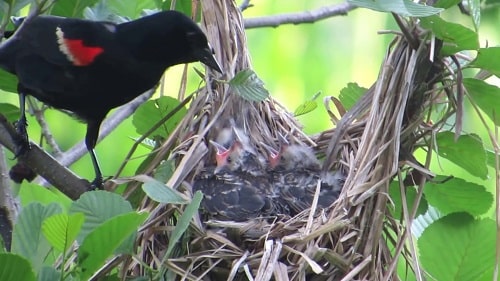
Family life of Red-winged Blackbirds does not necessarily include fidelity. Any one male hosts as many as 15 female mates within his territory! They’re known as a highly polygamous species of bird. 90% of some territorial male populations have more than one female nesting within his territory. Fact is, one-quarter to one-half of nestlings have been sired by, well, uh, somebody other than the original territorial male! Oh well, I guess they’re all just a part of our American family. Think of the “brood parasitic” cowbird that lays her eggs in other birds’ nests and lets the other birds raise their young. Whatever!
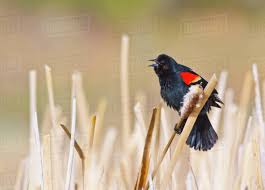
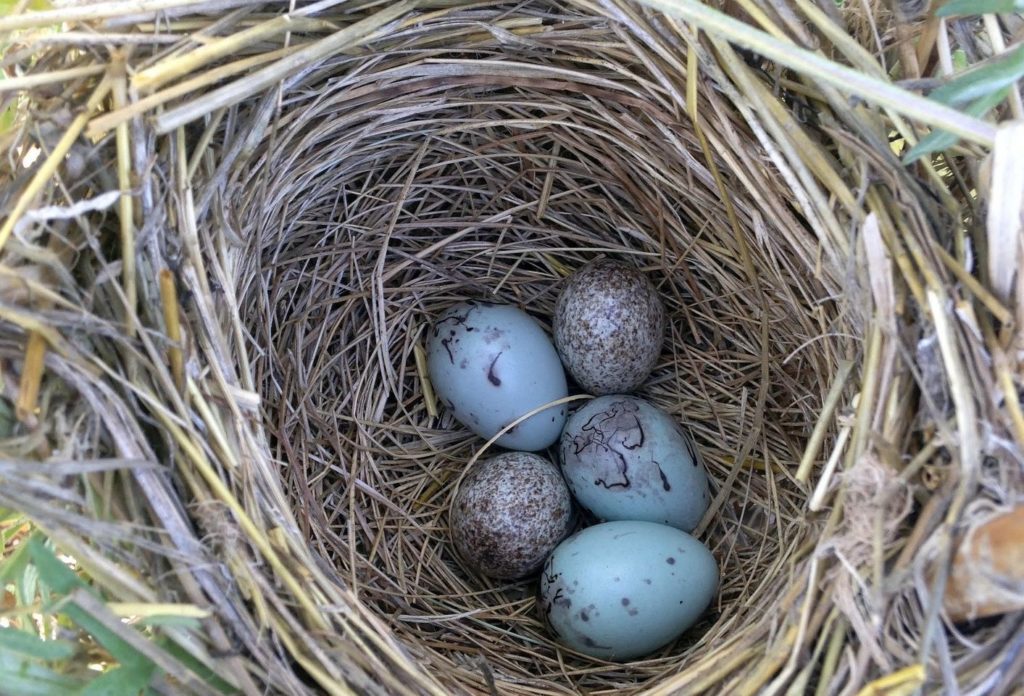
Red-winged Blackbirds roost in flocks throughout the year. In the summer months smaller flocks roost in the wetlands where the birds breed. Winter flocks can grow to several million birds that includes other blackbird species and starlings. Each day they will disperse from the roost and fly some 50 miles to feed, and then return to regroup. During breeding season, male Red-wings are ferocious defenders of their territory. They will spend most of the daylight hours making themselves known to intruders and predators. Intruder size seems to make little difference and can even include horses or people.

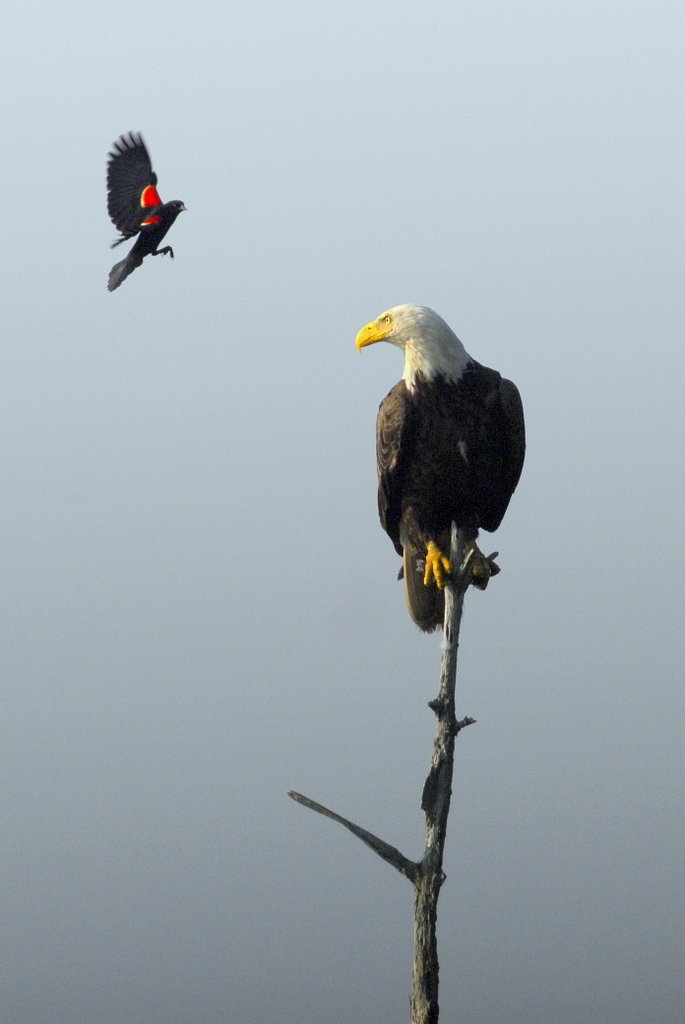
Although Red-wings are an integral part of any marsh or lakeshore, it’s not difficult to attract them to your backyard feeder. This is especially true during migration. As mostly ground foragers, make sure to put plenty of mixed grains and seeds on the ground as well as on your feeder. No one’s gonna complain about blackbirds when they see these striking black, red and yellow songbirds. Enjoy the beautiful Red-winged Blackbirds. See ya out there!

